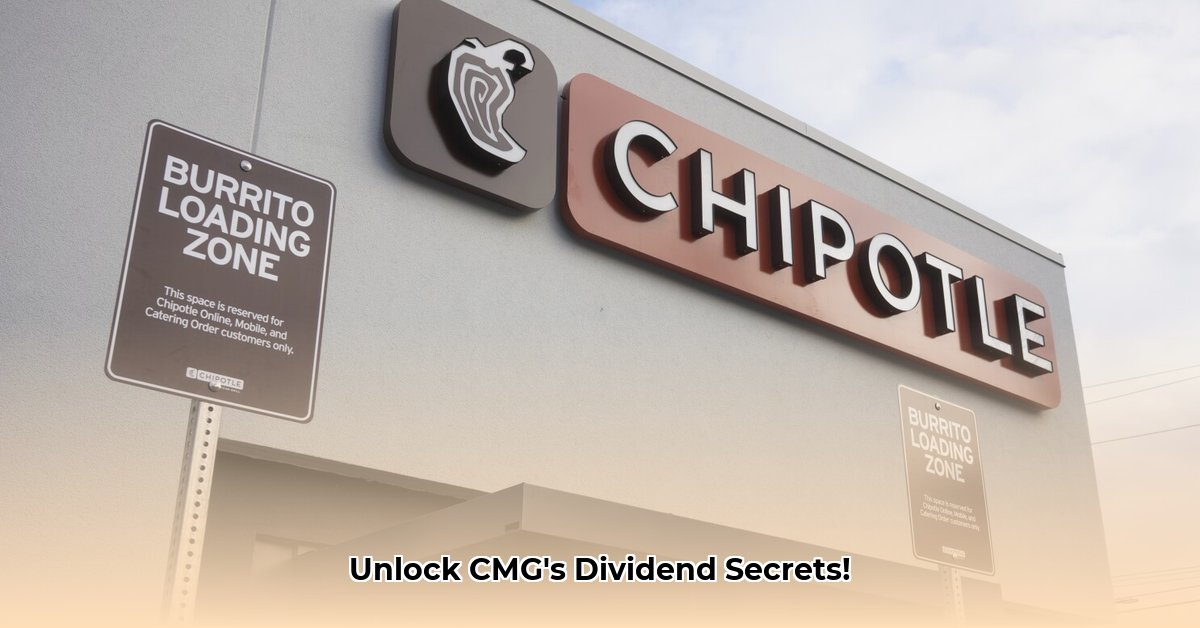
CMG Dividend History: A Detailed Analysis
Understanding Chipotle Mexican Grill's (CMG) dividend history requires a nuanced approach, going beyond a simple review of past payouts. This analysis delves into the factors influencing CMG's dividend policy, its implications for investors, and the limitations of relying solely on historical data. We will explore the interplay between CMG's financial performance, macroeconomic conditions, and competitive landscape to develop a comprehensive understanding. Understanding this history is crucial for investors assessing CMG's potential as a long-term investment.
Diving Deep into Chipotle's Dividend Payments
CMG's dividend history reveals a limited but instructive narrative. The company's most recent dividend payment was $0.20 per share in December 2020. Since then, CMG has not issued any further dividends. This cessation of dividend payments signals a strategic shift, prioritizing reinvestment in the company's growth over shareholder payouts. This decision is characteristic of high-growth companies focused on maximizing future returns.
The Big Picture: Economic Factors and CMG's Financial Decisions
CMG's dividend policy isn't solely determined by internal factors; it's significantly shaped by broader macroeconomic trends. High inflation, for instance, increases the cost of ingredients, labor, and other operational expenses, potentially reducing profitability and limiting the ability to distribute dividends. Fluctuations in consumer spending also impact CMG's revenue, affecting its financial resources available for dividend payouts. The impact of economic uncertainty on restaurant spending habits becomes a critical factor. Finally, labor market dynamics and supply chain disruptions can influence operational costs and ultimately, dividend decisions.
Comparing Chipotle to the Competition: A Benchmarking Exercise
To contextualize CMG's dividend strategy fully, a comparative analysis with its fast-casual restaurant competitors is necessary. While specific comparative data on dividend policies is not included here, such an analysis would reveal whether CMG's approach is typical for its peer group, or if it represents a notably conservative or aggressive strategy. This comparison highlights whether CMG's decision to cease dividend payments reflects industry trends or its unique circumstances. This comparative perspective provides greater clarity on CMG's strategic choices.
The Limits of History: Acknowledging Data Constraints
While historical data provides valuable context, it's essential to acknowledge its limitations in predicting future dividend payments. Past performance is not indicative of future results, meaning the absence of dividends in recent years doesn't guarantee their continued absence. Furthermore, the availability of comprehensive, readily-accessible company descriptions varies across financial data platforms, which can impact the overall assessment. Therefore, making forward-looking predictions based solely on historical data should be treated cautiously.
CMG's Financial Performance and Dividend Sustainability
A thorough assessment of CMG's dividend sustainability necessitates a correlation with its overall financial health. Analyzing key performance indicators like revenue growth, profitability, cash flow, and debt levels provides insights into the financial capacity for future dividend payouts. Strong revenue growth and high profitability, for instance, would suggest a greater possibility of resuming dividend distributions in the future. Comparing these metrics to the company's historical dividend payments helps in assessing sustainability.
Investor Implications: Actionable Advice
The absence of current dividend payments alters the implications for different investor groups.
- Investors focused on dividend income: CMG is currently not an attractive option. Consider other dividend-paying stocks.
- Growth-oriented investors: CMG’s focus on reinvesting profits may align with this investment strategy. Monitor the company's financial performance and future prospects closely.
- Financial Analysts: Incorporate an analysis of macro-economic factors and competitive pressures into the valuation. A forward-looking model should assess the likelihood of future dividend payments based on projected financial performance.
Conclusion: A Holistic Perspective
CMG's dividend history reveals a company prioritizing investment in future growth. However, understanding this decision requires a comprehensive analysis that considers the broader economic context, competitive dynamics, and limitations of relying exclusively on past data. Investors should evaluate CMG primarily on its growth prospects and overall financial health rather than focusing solely on its current dividend policy. Continuous monitoring and a comprehensive understanding of the company and its industry are key to successful investment decisions.